Selective Breeding Display
Tap the yellow hotspots to see more information on the selected object.
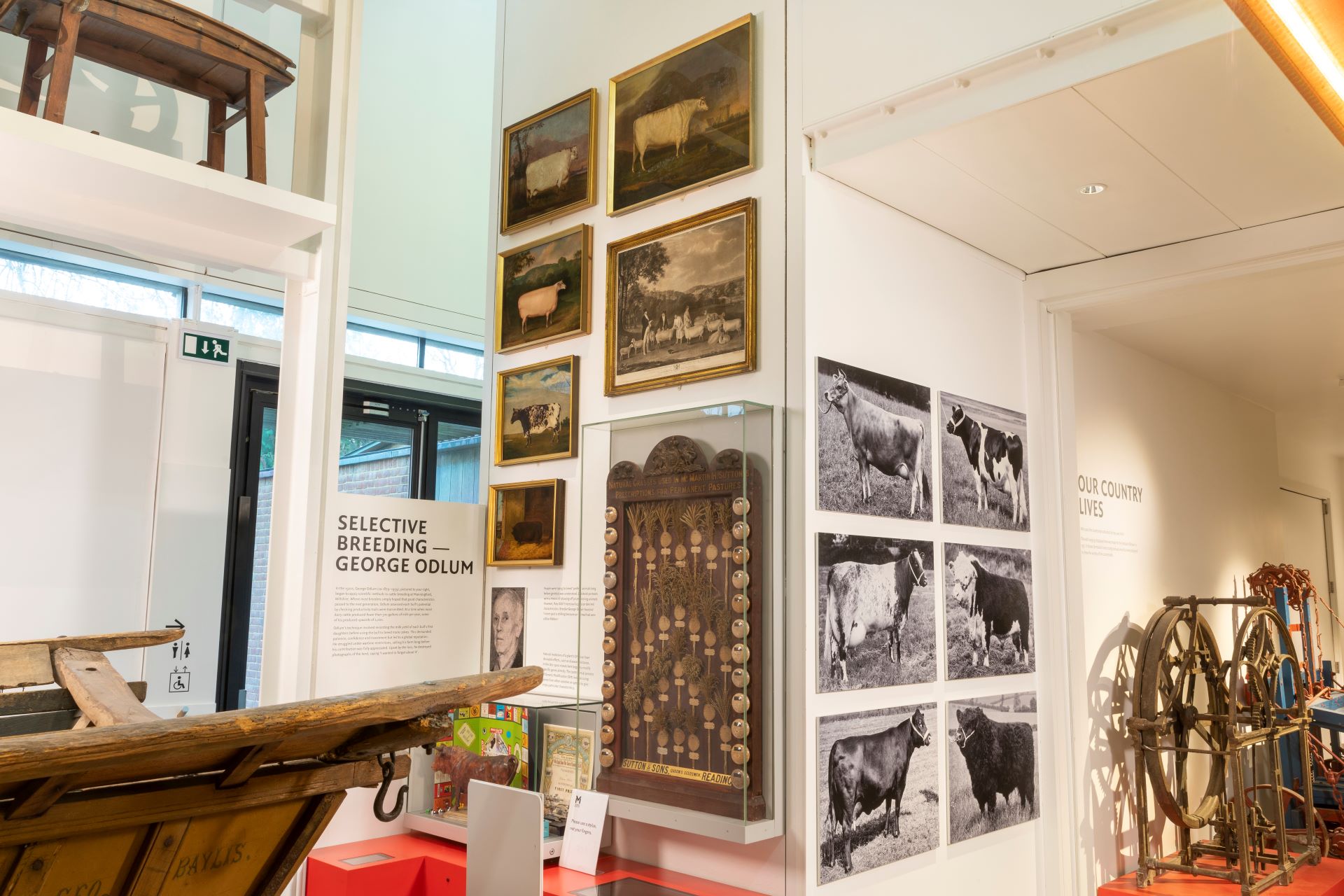
White ox painting
Prize pig painting
Suttons Seeds cabinet
Jersey cow photograph
Hereford cow photograph
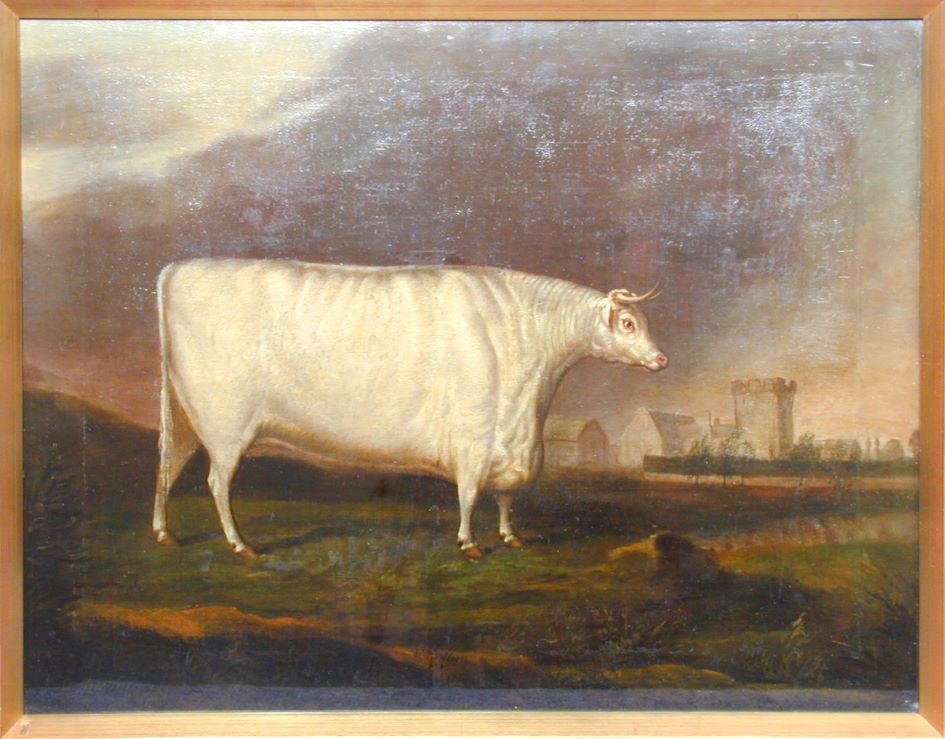
White ox painting
This painting of an ox was donated to the Museum by the Royal Smithfield Club, and therefore likely depicts an animal which competed in one of their prime stock shows. The Club sought to promote the breeding of top quality livestock through these shows. Artists were commissioned to advertise the achievements of prize-winning farmers by portraying their livestock in a positive light. It was not unheard of for artists to over-accentuate the size and shape of the animals. Not all 19th century cows and oxen were as rectangular as these paintings suggest!
MERL 64/47

Prize pig painting
Richard Whitford created this oil painting of a black Berkshire pig in 1872. This was the same year the pig won the Royal Agricultural Society’s show in Cardiff.
This breed of pig was highly sought after in the 19th century. The show’s judges wrote that “as for type, quality frame, and coat, they are amongst the best-looking pigs out”. Berkshire pigs have a long history within British meat-eating culture. They are the oldest pedigree pig group in Britain. However, they also have an international reputation, being well renowned in Japan
MERL 65/354
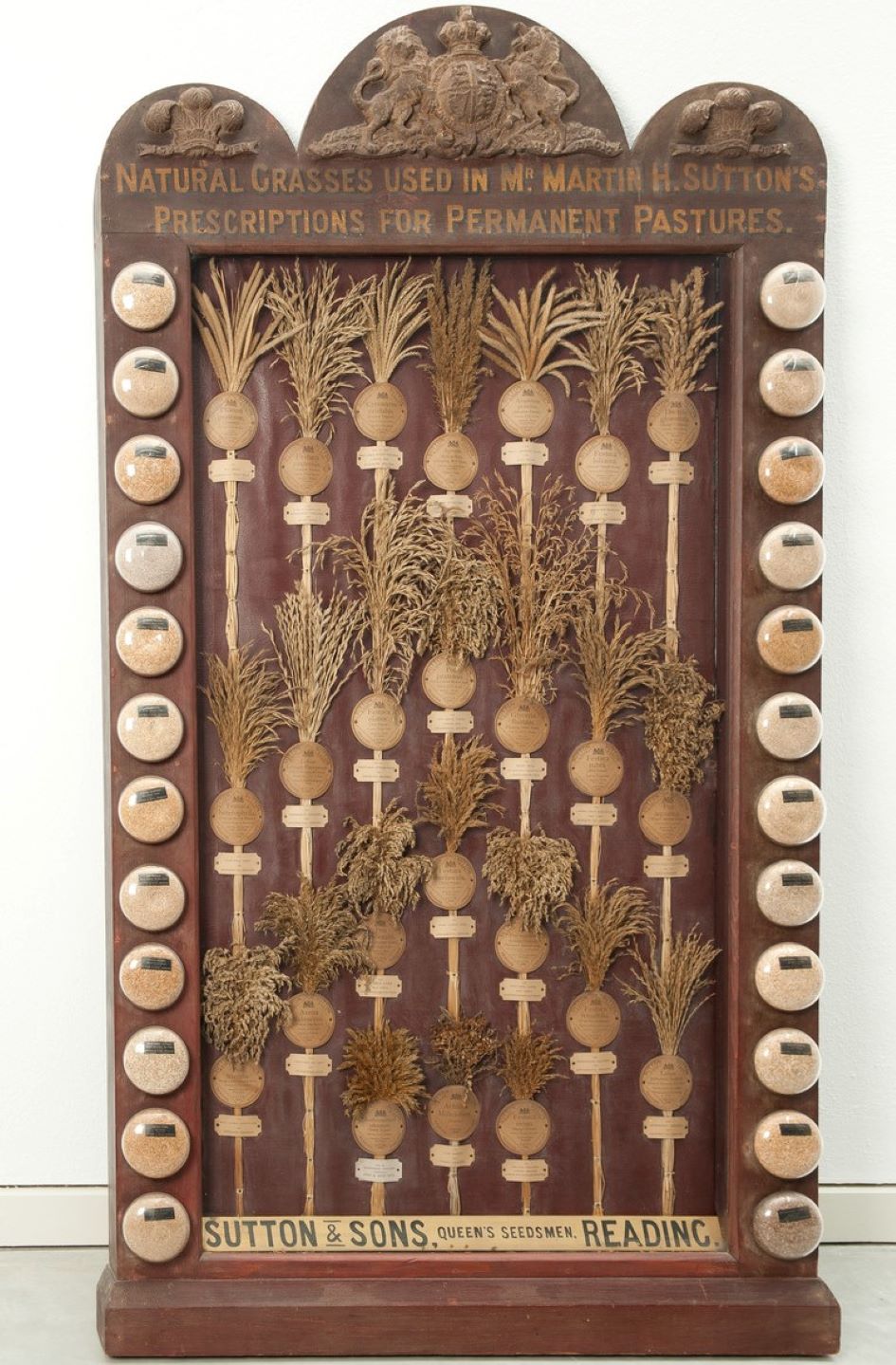
Suttons Seeds cabinet
This seed display cabinet was created by Suttons Seeds and is Victorian in origin, as evidenced by the inscription ‘Queen’s Seedsmen Reading”. It contains 24 samples of grasses, along with attached bags carrying grass seeds. The purpose of the case is to advertise these varieties of grass seed, all of which were sold by Suttons.
Established in 1806 in Reading, Suttons Seeds prospered in the 19th century due to its successful adoption of rail and postal services for remote deliveries. It had a strong international presence, most notably with a branch in Calcutta, India.
MERL 2004/27
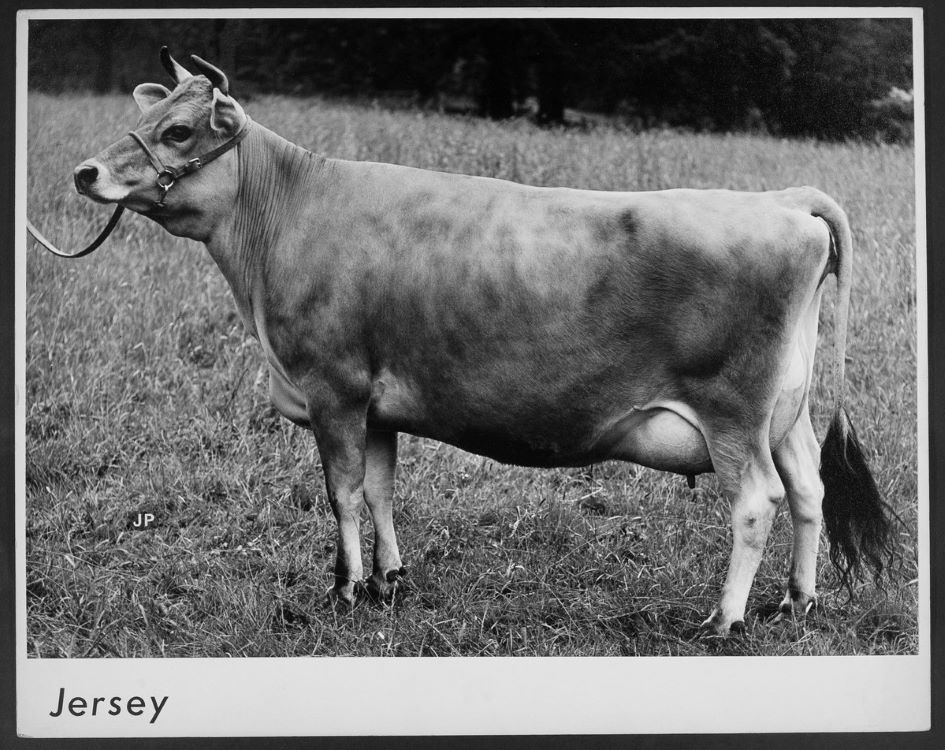
Jersey cow photograph
The origin of the Jersey cow is not fully understood, though they likely first came from France, as a narrow land bridge existed between the two until 709AD. The breed spread around the world in the later 19th century, with thousands of cows being shipped to the USA every year. They are adaptable and hardy cows, and can therefore survive in a range of climates. Their milk is highly regarded for its quality. They are also famous for their friendly nature.
This photograph was taken by livestock photographer Joan Pitt in the 1960s.
MERL P DX1903
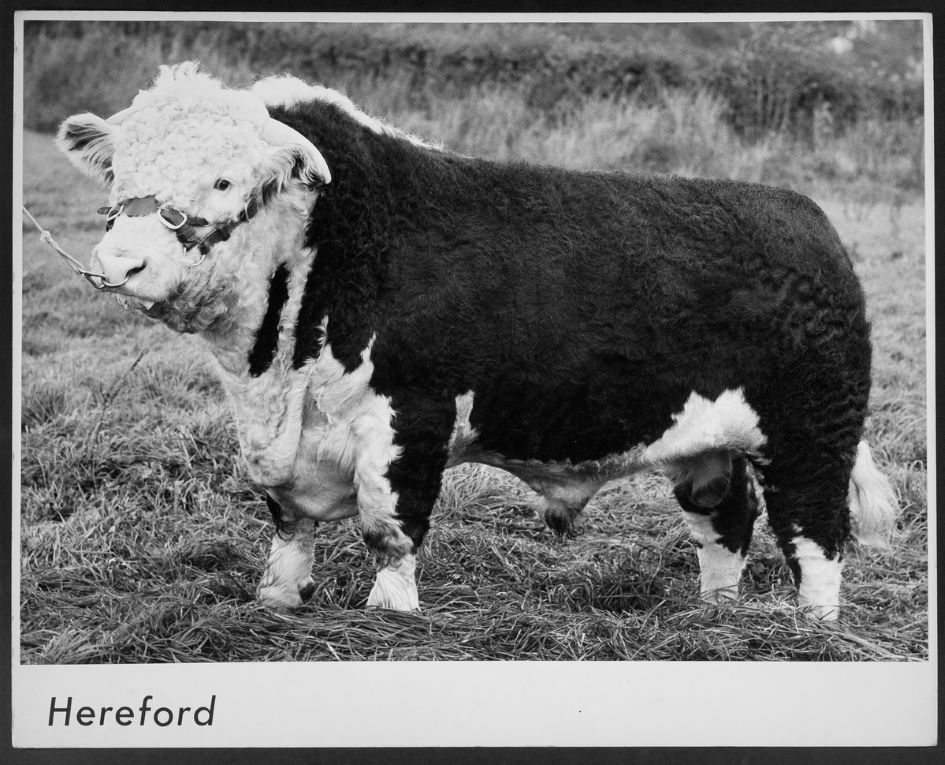
Hereford cow photograph
Hereford cattle evolved for thousands of years in Britain before being exported for the first time in 1817. They likely originated from a cross between the Roman small red cattle, and a large breed that existed on the Anglo-Welsh border. Herefords give a high beef yield and can calve at a later age than most cows, but they are best known for their hardiness, being able to thrive in arctic Scandinavian conditions as well as the blazing heat of an Australian summer.
This photograph was taken by livestock photographer Joan Pitt in the 1960s.
MERL P DX1903